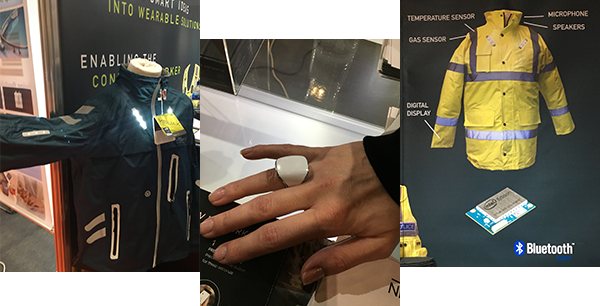I recently attended the Wearables Technology Show at Excel, London. Walking around the exhibition and listening to some of the presentations, my overall impression was of wearable technology becoming key, personalised consumer products.

Not only serving a really useful purpose, but also looking good, the Nimb ring is a stylish piece of jewellery with a panic button discreetly tucked away on the back. Finding yourself in a difficult situation you simply hold the button down for 3 seconds and a message with your GPS location is sent to your pre-set emergency contacts. Available for pre-order, Nimb is scheduled for release in May this year.
Staying with the theme of security (and being an avid cyclist) I love the Visijax which looks and acts like any other cycling jacket but has embedded LED lights on the front, back and in the arms. A small battery unit enables you to turn the lights on without getting off the bike and motion sensors in the arms detect when you lift your arm (eg when turning) and activates the LED lights. Another stylish piece of wearable technology that brings real benefits to the user.
There were many other wearable innovations that provided great user benefit and it was also a theme in some of the presentations. Innovations are defined by user value and will only succeed if they get good pick up from the target market. Personalisation was also discussed as being key to success and this is something we at Watt Knowledge have been talking about too. Personalisation and user benefit are vital ingredients if wearables are to achieve similar success to the smartphone.
As well as the innovations, it was also great to see the involvement of women in wearable technology on the Women of Wearables panel. Sharing stories about starting their own wearable technology companies, they too discussed the importance of user benefit and personalisation. And if the wearable provides data, that also has to be useful and not just data for data’s sake. Without these key ingredients, user interest ceases after about 6 months and the wearable becomes just another gadget.
There’s been a lot of wearable technology that has been developed because it can be, but if last week’s event was an indicator of what’s to come then it looks as if wearable technology will be really useful too. User benefit, useful data and personalisation are the way forward for success and innovations must have a human aspect to them in order for us to be able to relate to them.
